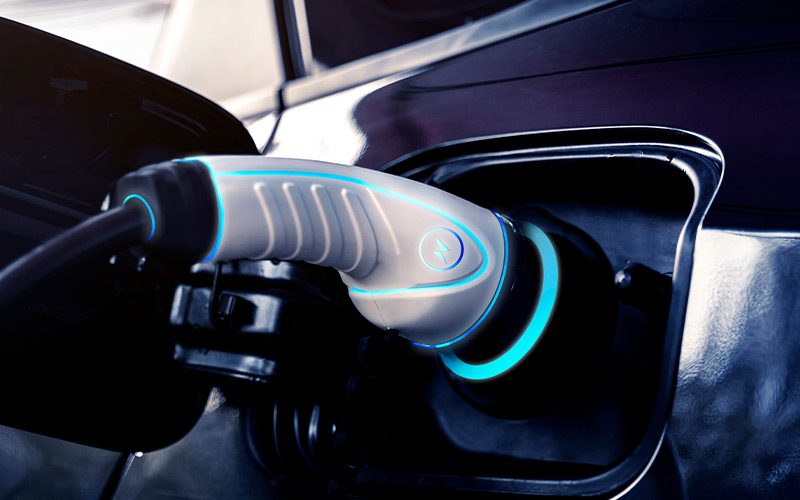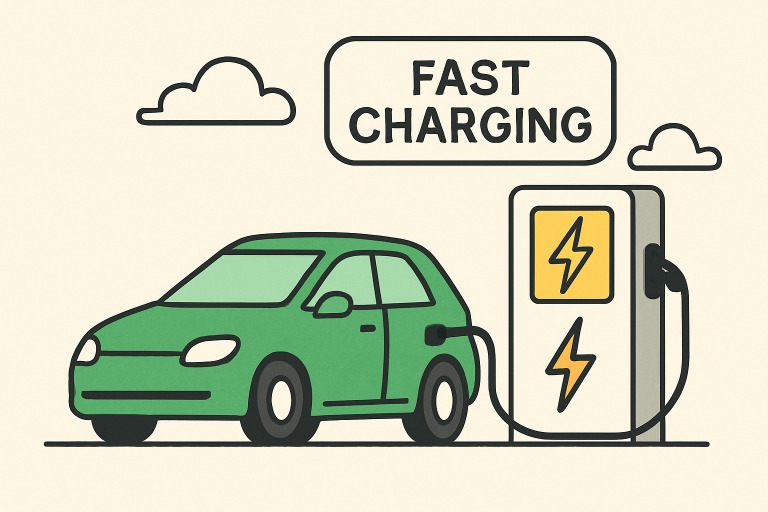Lifestyle
The Future of Fast Charging for Electric Vehicles

Key Takeaways
- Advancements in fast-charging technology significantly reduce EV charging times, making electric vehicles more appealing for daily use and long-distance travel.
- Major automakers and tech companies worldwide invest aggressively in developing and deploying ultra-fast charging solutions, sparking innovation and competition.
- Improvements in charging infrastructure and standardization are essential for widespread EV adoption and seamless user experience across regions and platforms.
Introduction
The rapid acceleration in electric vehicle (EV) adoption fundamentally reshapes the transportation landscape, with fast-charging technology at the core of this evolution. As many drivers transition to EVs, the expectation for convenience and speed reminiscent of traditional refueling intensifies. This fundamental shift has catalyzed significant advancements in EV charging solutions, making fast and accessible charging no longer a luxury but a necessity. For forward-thinking businesses and municipalities, the demand to invest in a DC fast charger for high-traffic commercial locations has become paramount to accommodate rising consumer needs and future-proof critical infrastructure against the rapid evolution of mobility.
This burgeoning demand fuels a global race among technology providers and automakers to innovate and deliver faster, safer, and more efficient charging options. Developments in this arena are shortening the time required to add hundreds of kilometers of range to an EV, making ultra-fast charging a reality rather than a distant promise. These breakthroughs are not just enhancing the day-to-day practicality for individual drivers. Still, they are also setting the stage for electric vehicles to directly rival or surpass internal combustion engines for long-distance travel and commercial use. The era where electric fleets can seamlessly support logistics, ridesharing, and other high-usage applications is within reach, propelled by the relentless advancement of fast-charging technology.
Advancements in Fast-Charging Technology
The last few years have ushered in unprecedented advancements in fast-charging solutions for electric vehicles. Innovations in battery chemistry, smart software management, and state-of-the-art power electronics are closing the gap between EV charging times and the experience of refueling with gasoline. Today, advanced systems can deliver up to 400 kilometers of range in as little as five minutes—a feat that would have been unimaginable a decade ago. These technical milestones radically transform drivers’ perception of electric vehicles, mitigating the so-called “range anxiety” that has long hindered mass adoption.
Central to this progress is the transition toward high-voltage battery architectures, moving from traditional 400V systems to more powerful 800V and even 1000V designs. This technological leap allows batteries to safely accept much higher power levels in a short span of time, unlocking charging speeds that were previously out of reach. Meanwhile, the emergence of robust lithium iron phosphate (LFP) and advanced nickel-manganese-cobalt (NMC) battery chemistries is improving battery longevity and thermal stability. On the infrastructure side, integration of cutting-edge silicon carbide (SiC) semiconductors and other highly efficient power conversion technologies not only reduces energy losses and waste heat but also minimizes the potential for battery wear. This balancing act between charging speed, efficiency, and battery health is critical, ensuring that the benefits of fast charging do not come at the expense of reliability or safety.

Major Players in the Fast-Charging Race
The international race to lead the EV fast-charging sector is intensifying, driven by a mix of veteran automakers, pioneering battery manufacturers, and ambitious tech firms. Among the chief innovators are:
- BYD: This groundbreaking automaker has set a new global standard with the development of a 1,000 kW fast-charging system, capable of fully charging certain vehicles in as little as five to eight minutes. Harnessing a proprietary blend of battery innovations and advanced silicon carbide power chips, BYD is helping redefine what is possible for commercial fast charging on a global scale.
- CATL: Widely regarded as a leader in battery technology, CATL introduced an upgraded cell architecture that enables charging sufficient for a 520 km range in merely five minutes. Such performance is made possible through significant breakthroughs in both cell chemistry and sophisticated battery management software, which together surpass previous industry benchmarks and enhance overall energy density.
- Porsche: Known for its engineering rigor, Porsche has focused on a unique stepped and controlled charging protocol that preserves battery life even during high-speed charging sessions. Vehicles like the Porsche Taycan exemplify how automakers balance fast charging capabilities and long-term battery health, further augmenting EVs for both performance enthusiasts and mainstream drivers.
Additional trailblazers have set the pace with their vast global Supercharger network and continually raise the bar for both charging speed and the user experience. Many European and Asian automakers are also following suit by adopting shared fast-charging platforms and testing the next generation of charging protocols to maximize cross-compatibility, ensuring that users have consistent and reliable options regardless of where they travel.
Infrastructure and Standardization
The potential of fast-charging technology to revolutionize mobility hinges upon the availability of a dense, accessible, and reliable charging network. In the United States, for example, a major coalition of automakers has announced plans to install 30,000 new public fast-charging stations by 2030—a massive logistical and technical undertaking. This strategic buildout is underpinned by data-driven planning, ensuring that chargers are available not just in city centers but also along high-traffic highway corridors. When executed effectively, these efforts eliminate key barriers to EV adoption, empowering drivers to confidently plan long trips and accelerating the integration of EVs into commercial fleets.
Standardization also plays a pivotal role in building consumer confidence and ensuring smooth operation across brands. The widespread adoption of the North American Charging Standard (NACS), originally devised by Tesla and now overseen by SAE International, exemplifies the industry’s movement toward interoperability. As more automakers align with universal connectors and cross-compatible charging hardware, EV owners are liberated from concerns about charger compatibility or proprietary barriers. For commercial property owners and businesses, prioritizing a robust and flexible DC fast charger for high-traffic commercial locations is a vital step. Such forward-thinking investments not only accommodate today’s growing fleet of EVs but also position infrastructure to support a diverse array of future vehicles and emerging charging standards.
Challenges and Future Outlook
Financial and Technical Barriers
While the future looks bright for fast charging, significant hurdles remain that could slow or complicate widespread implementation. Chief among these is the lofty cost associated with deploying ultra-fast charging stations, which require substantial infrastructure investments, local grid upgrades, and ongoing maintenance of high-powered equipment. These costs are even greater in remote areas or regions with dated grid connections, meaning that coordination among utility providers, policymakers, and technology companies will be essential to ensure equitable access and grid reliability across urban and rural settings.
Thermal Management and Battery Life
Delivering ultra-fast power to vehicle batteries creates intense heat, which, if left unchecked, risks shortening battery lifespan and even triggering safety concerns. The next wave of innovation hinges on advanced thermal management through liquid-cooled charging cables, new heat-dissipating materials, or AI-powered charging algorithms that adjust power delivery in real time to protect the battery. Automakers and battery suppliers are heavily investing to address these challenges, as effective heat control is vital for maximizing battery durability while consistently offering high-speed charging experiences that consumers demand.
Integrating Renewable Energy and Emerging Solutions
As nations worldwide strive to decarbonize transportation, there is a compelling opportunity to pair fast-charging networks with renewable energy sources, such as solar and wind power. This synergy not only ensures greener charging sessions but also bolsters grid efficiency and sustainability. Looking ahead, game-changing innovations like wireless charging pads and bi-directional vehicle-to-grid (V2G) connectivity are on the horizon. Such technologies could further simplify charging, enhance grid resilience, and transform EVs from passive infrastructure users into active elements of a more responsive, sustainable energy ecosystem.
Ultimately, the evolution of fast-charging technology reflects the remarkable collaboration and innovation taking place at the intersection of the automotive, energy, and technology sectors. Continued investment in infrastructure, dedication to standardization, and a focus on universal accessibility are setting the stage for electric vehicles to become the dominant force in personal and commercial mobility finally. With each innovation, the notion of recharging an EV as quickly and effortlessly as stopping for gas moves closer to reality, driving the world toward a future defined by cleaner, faster, and more sustainable transportation.

